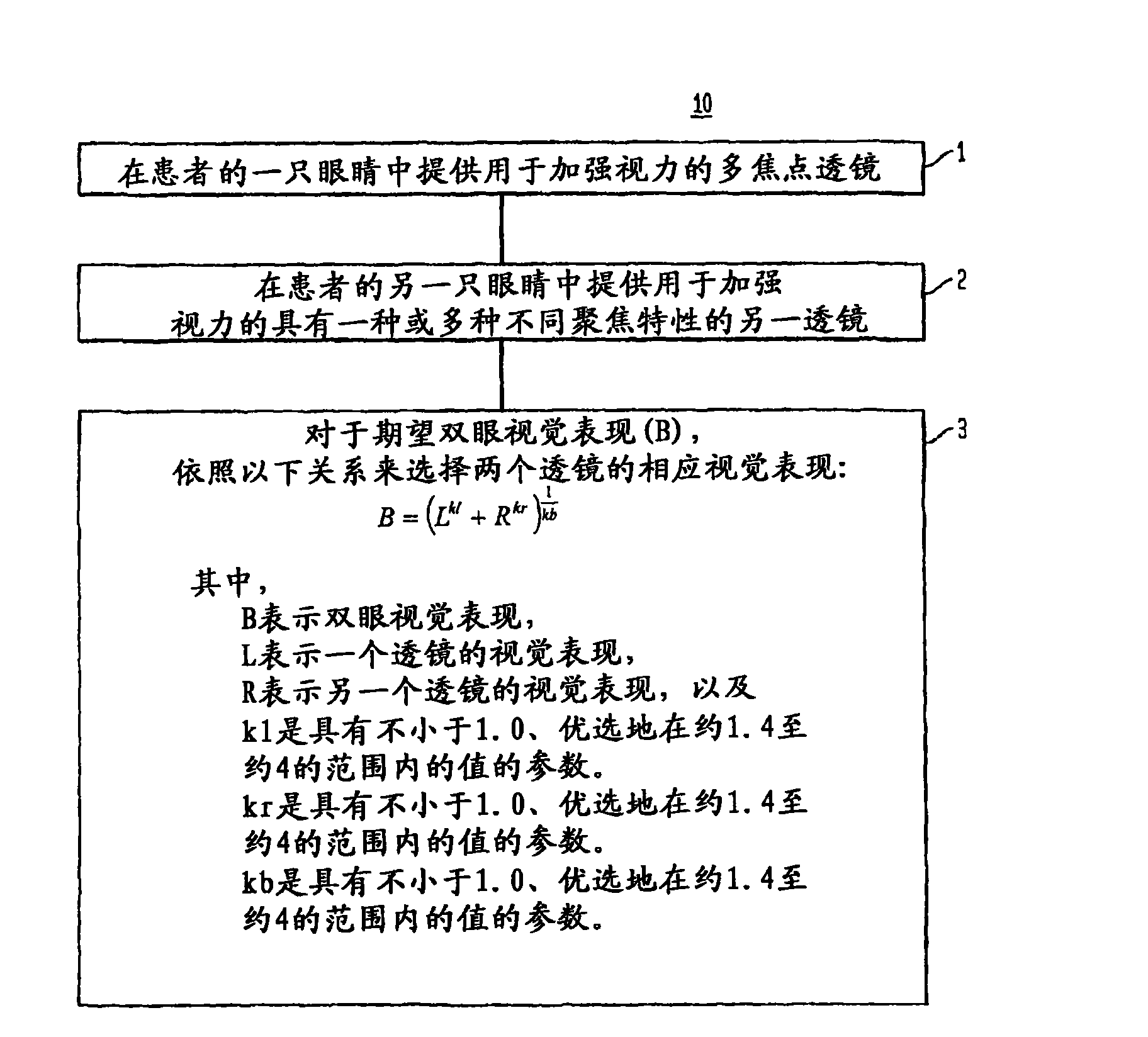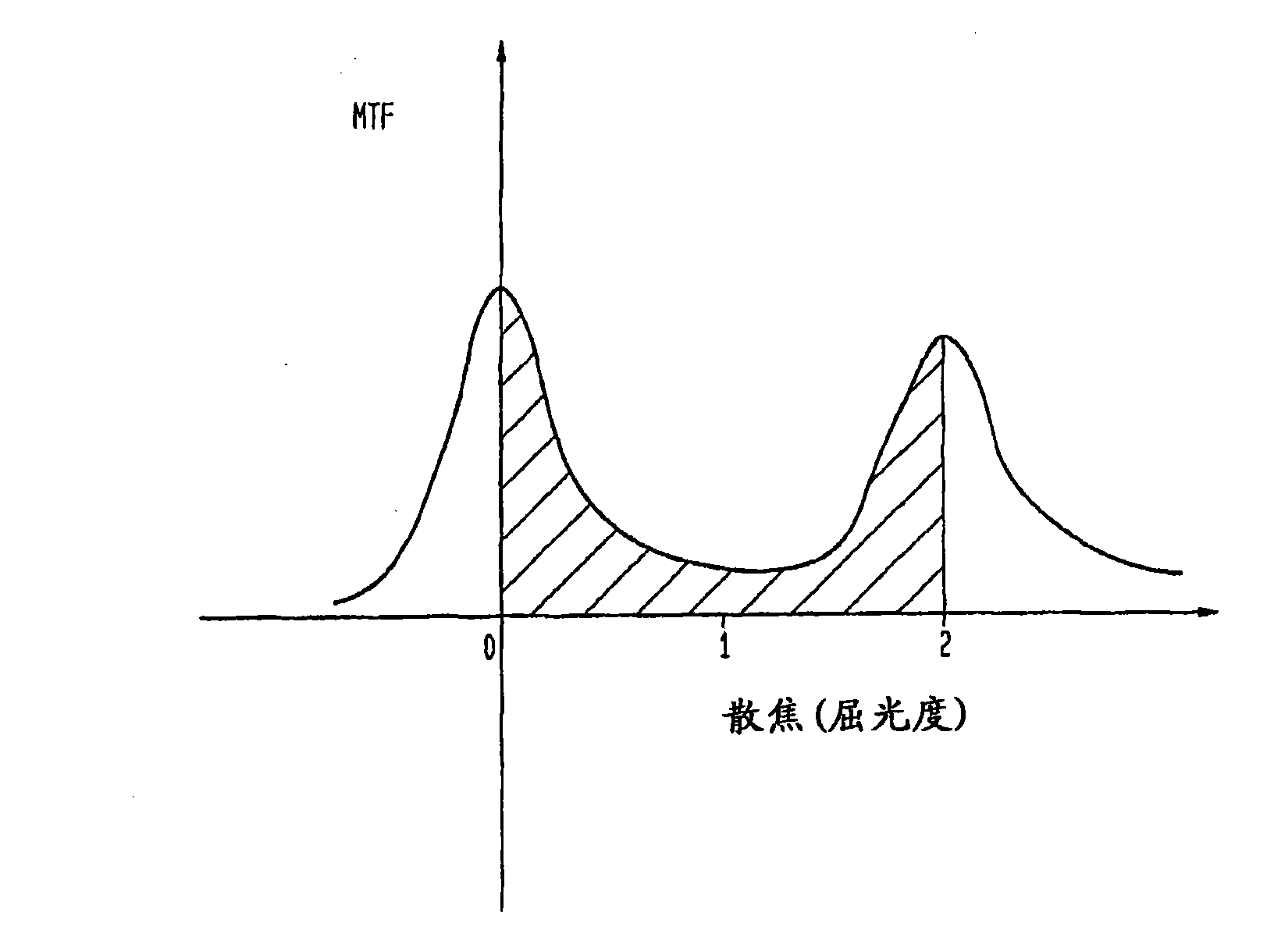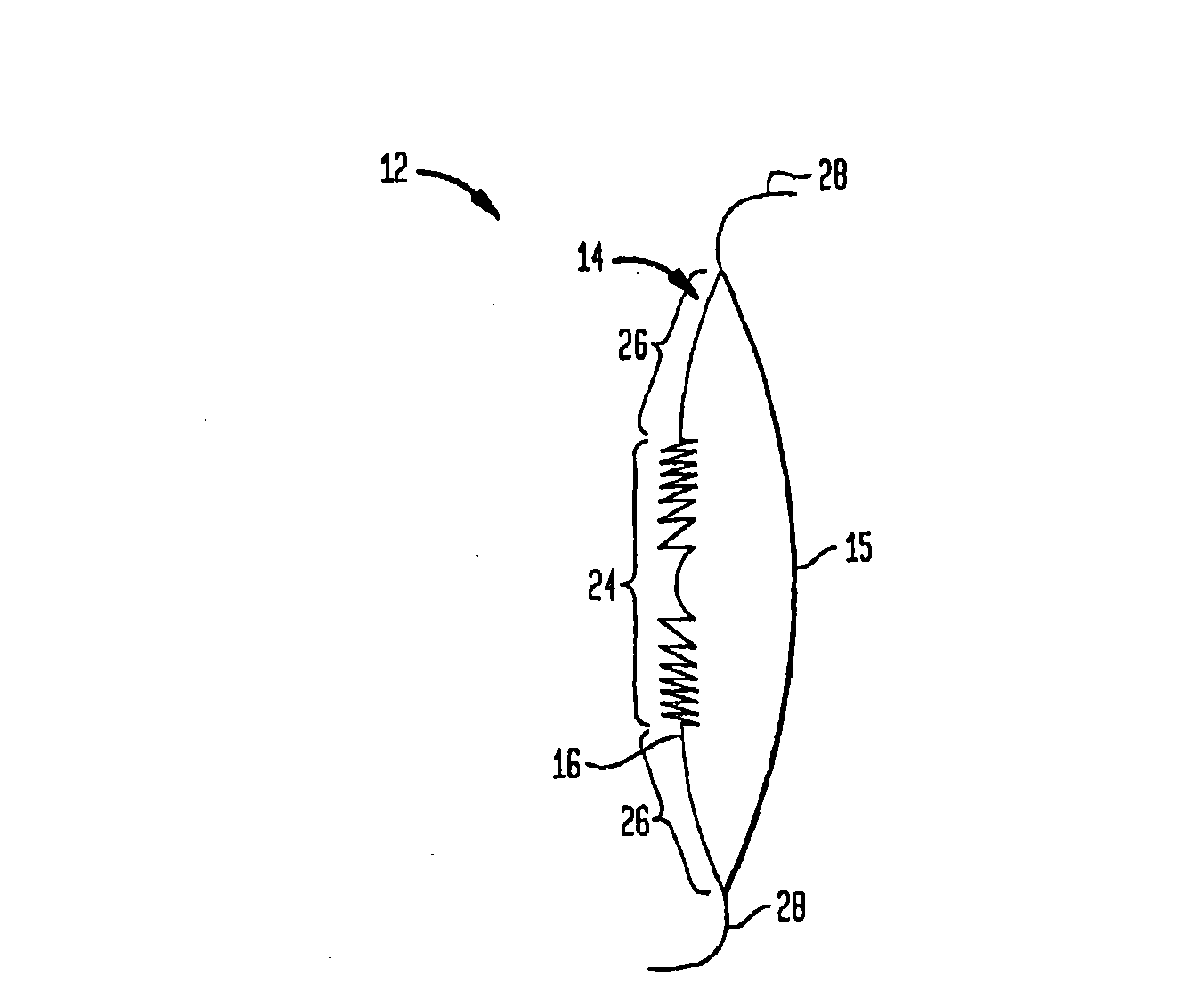Alternating optical system: mixing and matching optics to maximize binocular visual benefits
A binocular vision and binocular technology, applied in the field of vision correction and ophthalmology lenses, can solve the problems of patients with unsatisfactory binocular vision
- Summary
- Abstract
- Description
- Claims
- Application Information
AI Technical Summary
Problems solved by technology
Method used
Image
Examples
Embodiment 1
[0134] [066] A multifocal lens featuring a target refractive power of 0D and an added power of +3.0D was provided for use in one eye of the patient. Figure 7A The calculated through-focus acuity curve A (Acuity as a function of defocus) associated with this lens is shown. Visual acuity was expressed as the logarithm of the minimum angle of resolution (MAR in armin). A monofocal lens with a target power of -1.5D was provided for use in the patient's other eye. It is assumed that this lens exhibits some degree of asphericity (ie a conic constant of -42) in one of its surfaces to reduce spherical aberration effects. Figure 7A The calculated through-focus visual acuity associated with this single focus lens is also presented as Curve B. Predicted binocular visual performance characterized by binocular out-of-focus visual acuity curves was calculated by utilizing equation (1) above and setting parameters kl, kr, and kb to 4. This binocular acuity curve (shown by the dashed lin...
Embodiment 2
[0136] [067] A multifocal lens featuring a target refractive power of 0D and an added power of +3.0D was provided for use in one eye of the patient. Figure 7B The calculated through-focus acuity curve A (Acuity as a function of defocus) associated with this lens is shown. Another multifocal lens with a target power of 1D and an added power of 2.5D was provided for use in the patient's other eye. Figure 7B The calculated through-focus visual acuity associated with this other multifocal lens is also presented (curve B). Predicted binocular visual performance characterized by binocular out-of-focus visual acuity curves was calculated by utilizing equation (1) above and setting parameters kl, kr, and kb to 4. This binocular acuity curve (curve C shown by the dashed line) illustrates that the combined lens provides better than about 20 / 30 visual acuity from infinity to a distance of about 30 cm.
PUM
 Login to View More
Login to View More Abstract
Description
Claims
Application Information
 Login to View More
Login to View More - R&D
- Intellectual Property
- Life Sciences
- Materials
- Tech Scout
- Unparalleled Data Quality
- Higher Quality Content
- 60% Fewer Hallucinations
Browse by: Latest US Patents, China's latest patents, Technical Efficacy Thesaurus, Application Domain, Technology Topic, Popular Technical Reports.
© 2025 PatSnap. All rights reserved.Legal|Privacy policy|Modern Slavery Act Transparency Statement|Sitemap|About US| Contact US: help@patsnap.com



